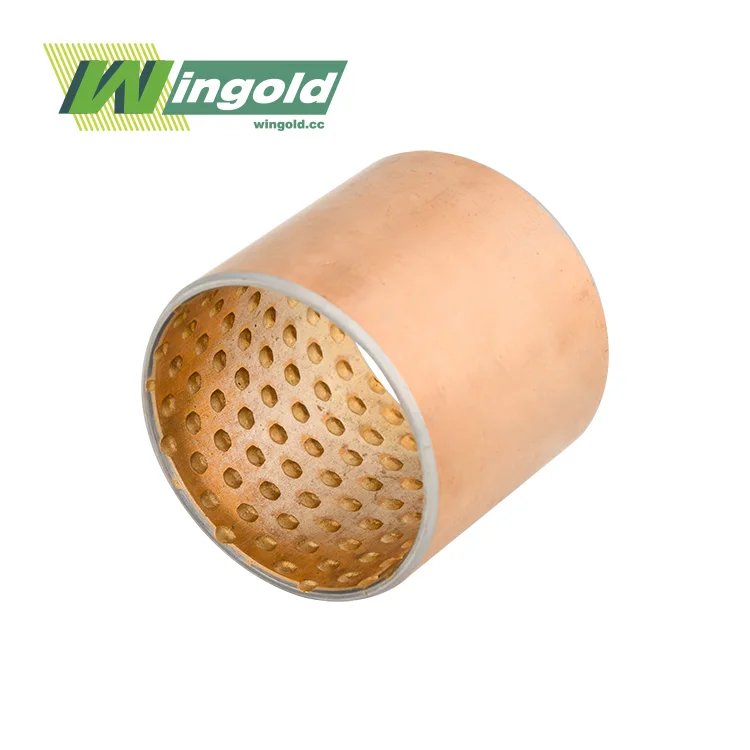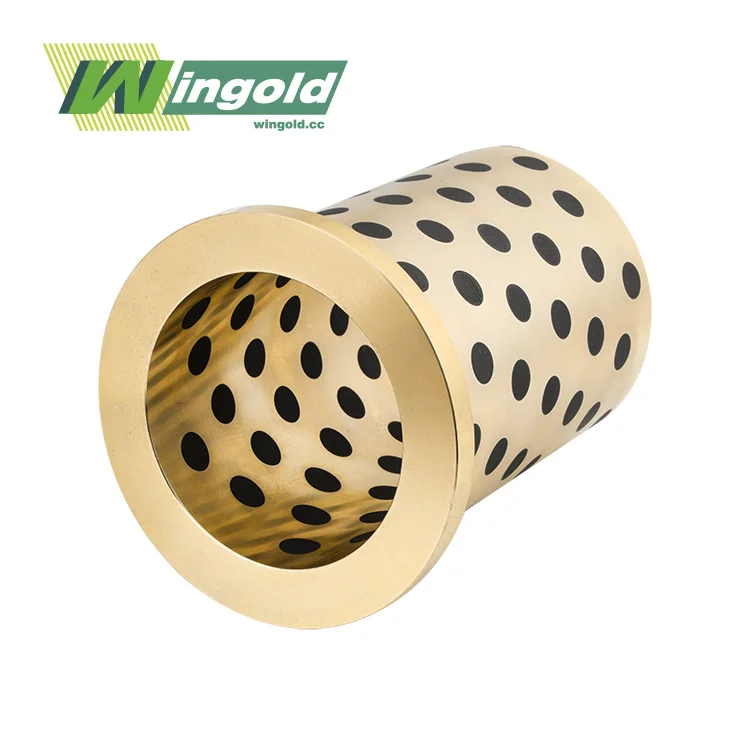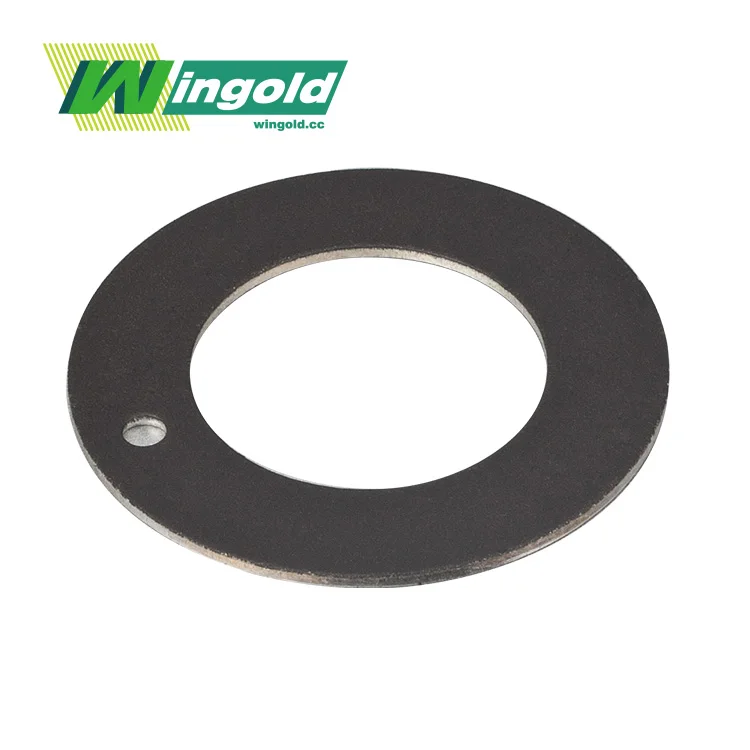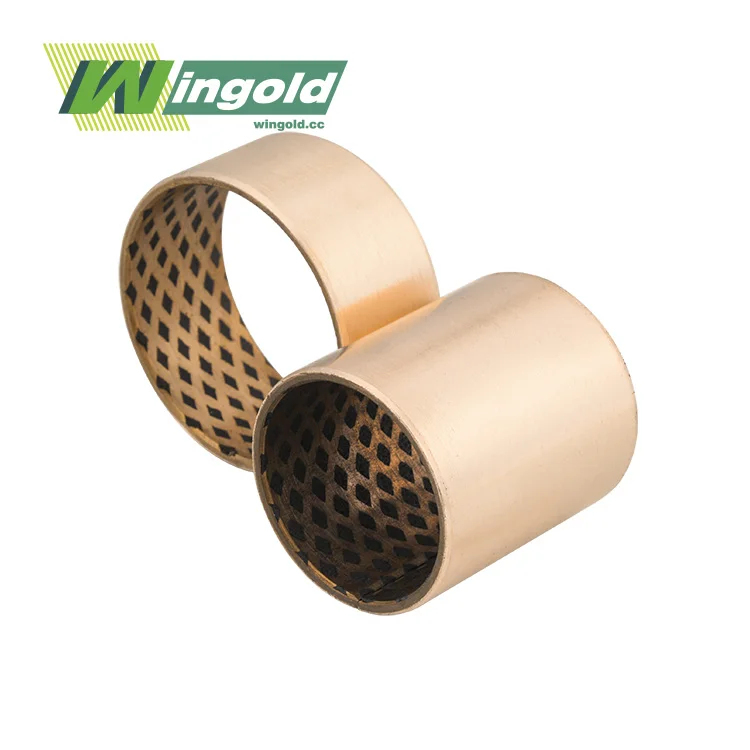Understanding PTFE Lined Bushings: Properties and Advantages
PTFE lined bushings are engineered to deliver outstanding performance in a wide range of applications. These bushings consist of a metal backing with a thin layer of PTFE (polytetrafluoroethylene) bonded to the inner surface. This unique construction combines the strength and dimensional stability of metal with the exceptional lubricating properties of PTFE.
Low Friction and Wear Resistance
One of the primary advantages of PTFE lined bushings is their remarkably low coefficient of friction. With a friction coefficient ranging from 0.02 to 0.08, these bushings significantly reduce energy loss and heat generation during operation. This low friction characteristic translates to smoother motion and reduced wear on mating components, ultimately extending the lifespan of your machinery.
Chemical Resistance and Temperature Range
PTFE lined bushings boast excellent chemical resistance, making them suitable for use in corrosive environments or applications involving aggressive fluids. These bushings can operate effectively across a wide temperature range, from -200°C to +280°C, ensuring consistent performance in extreme conditions.
Versatility and Load Capacity
PTFE lined bushings offer versatility in terms of size and load-bearing capacity. With inner diameters ranging from 5mm to 300mm and wall thicknesses between 1mm and 5mm, these bushings can accommodate various shaft sizes and load requirements. The maximum load pressure of 140N/mm² and a PV value of up to 3.6 N/mm² * m/s in dry conditions make them suitable for both light-duty and heavy-duty applications.
Composite Bushings: Strengths and Applications
Composite bushings are advanced self-lubricating bearings engineered from a polymer matrix reinforced with fibers, fillers, or PTFE linings. This combination creates components that balance lightweight construction with superior performance. By integrating materials with complementary properties, composite bushings deliver enhanced strength, durability, and wear resistance. These qualities make them highly suitable for specialized industrial, automotive, and aerospace applications.
Self-Lubricating Properties
The self-lubricating functionality of composite bushings removes the need for frequent external lubrication, reducing downtime and operational costs. Embedded solid lubricants ensure consistent performance even under continuous use. This feature minimizes contamination risks in sensitive environments, such as food processing or medical equipment. As a result, composite bushings are ideal for applications where reliability and cleanliness are top priorities.
Strength and Durability
Composite bushings demonstrate excellent strength-to-weight ratios, providing reliable performance in systems where weight reduction directly impacts efficiency. PTFE lined bushings combined with reinforced materials allow for improved load capacity and resistance to surface wear. This structural advantage reduces the risk of deformation under stress, prolongs service life, and supports demanding conditions in heavy machinery, transportation, and energy industries.
Corrosion Resistance
A key benefit of composite bushings is their strong resistance to corrosion, even in environments exposed to moisture, salt, or harsh chemicals. Unlike traditional metal bearings, they do not require protective coatings to withstand aggressive conditions. This inherent property ensures longer service intervals, lowers replacement costs, and increases equipment reliability in marine, chemical, or outdoor applications.By lowering lubrication needs and resisting harsh environments, composite bushings help improve system efficiency, enhance safety, and significantly reduce long-term operational expenses.
Factors to Consider When Choosing Between PTFE Lined and Composite Bushings
Selecting the appropriate bushing type for your machine requires careful consideration of several factors to ensure optimal performance and longevity.
Load and Speed Requirements
Evaluate the load conditions and operating speeds of your application. PTFE lined bushings excel in high-speed, low-load applications, with a maximum sliding speed of 3m/s. For applications with higher loads or lower speeds, composite bushings might be more suitable.
Environmental Conditions
Consider the operating environment, including temperature range, exposure to chemicals, and presence of contaminants. PTFE lined bushings offer superior chemical resistance and can operate in temperatures from -195°C to 280°C, making them ideal for extreme conditions.
Maintenance Requirements
Assess the accessibility of the bushing location and the feasibility of regular maintenance. Both PTFE lined and composite bushings offer low maintenance solutions, but the self-lubricating properties of composite bushings may be advantageous in hard-to-reach areas.
Cost Considerations
While initial cost is a factor, it's crucial to consider the total cost of ownership, including installation, maintenance, and potential downtime. The long service life and reduced maintenance requirements of PTFE lined bushings can offset higher initial costs in many applications.
Specific Application Needs
Some applications may have unique requirements that favor one bushing type over the other. For instance, PTFE lined bushings are particularly well-suited for shock absorbers in automobiles and motorcycles, as well as various hydraulic cylinders, due to their low friction and high wear resistance.
Conclusion
Choosing between PTFE lined bushings and composite bushings requires a thorough understanding of your application's specific needs and operating conditions. PTFE lined bushings offer exceptional low friction, wear resistance, and chemical resistance, making them ideal for a wide range of applications, particularly those requiring smooth operation and minimal maintenance. Composite bushings provide a balance of strength, self-lubrication, and corrosion resistance, suitable for applications with specific material property requirements.
At Wingold Bearing, we specialize in providing customized self-lubricating bearing solutions to meet your unique needs. Our extensive range of PTFE lined bushings and other bearing products are designed to deliver superior performance, reliability, and longevity across various industries. For expert guidance in selecting the optimal bushing for your machine or to explore our customized solutions, please contact us at info@wingold.cc.
FAQ
What are the main differences between PTFE lined and composite bushings?
PTFE lined bushings offer lower friction and excellent chemical resistance, while composite bushings provide self-lubrication and high strength-to-weight ratios.
Can PTFE lined bushings be used in high-temperature applications?
Yes, PTFE lined bushings can operate effectively in temperatures ranging from -195°C to 280°C.
Are composite bushings suitable for corrosive environments?
Many composite bushings offer excellent corrosion resistance, making them suitable for harsh environments.
What is the maximum load capacity of PTFE lined bushings?
PTFE lined bushings can handle a maximum load pressure of 140N/mm².
Do PTFE lined bushings require lubrication?
PTFE lined bushings can operate in both dry-running and lubricated conditions, offering flexibility in various applications.




